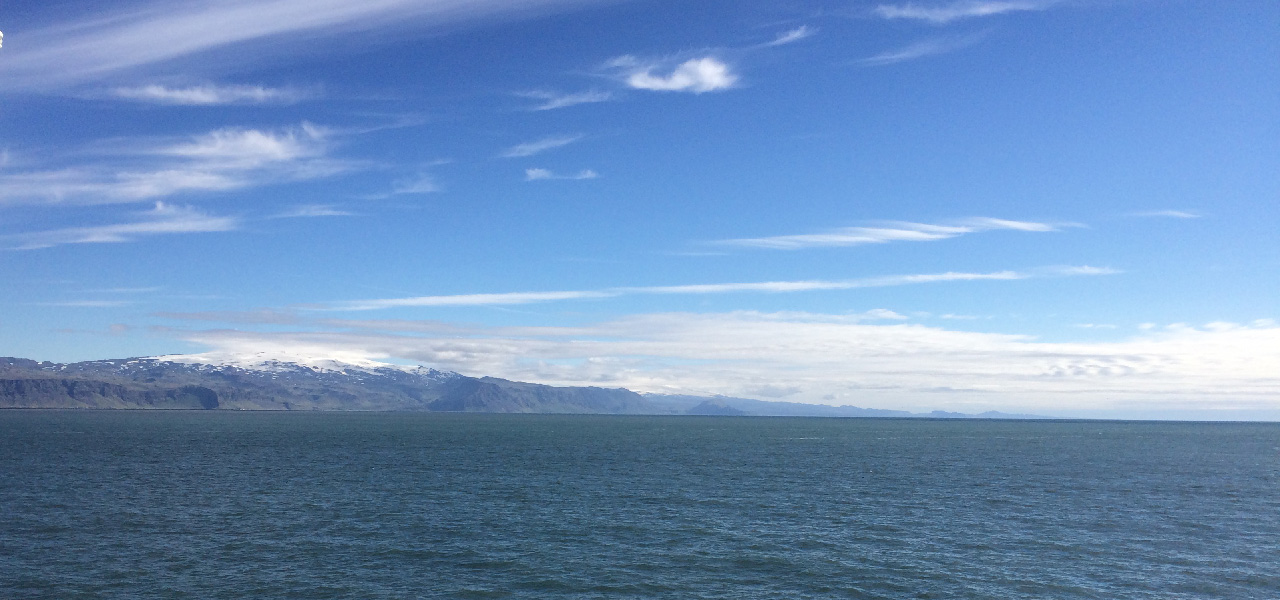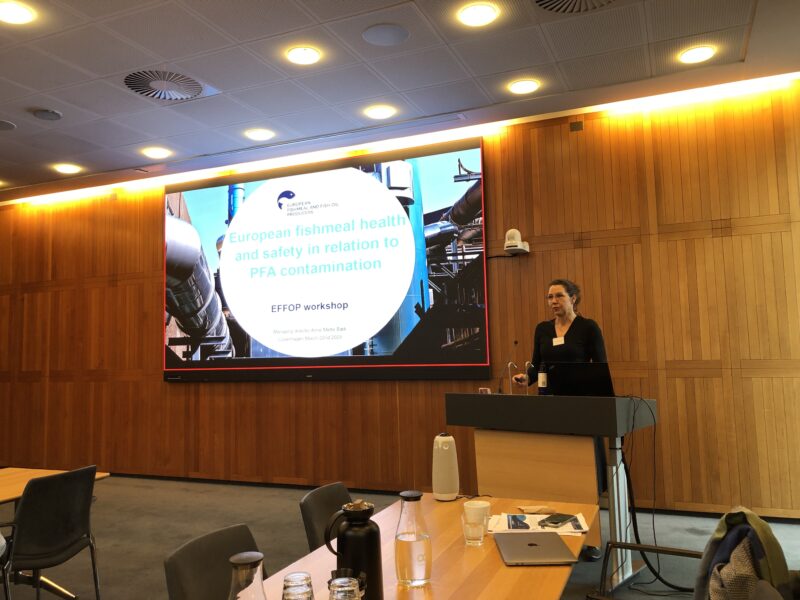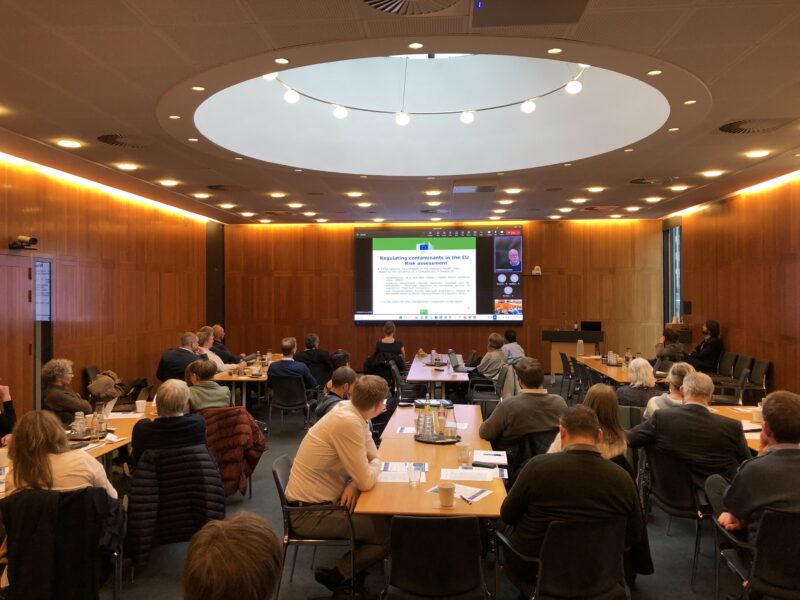
EFFOP holds successful workshop on “European fishmeal health and safety in relation to PFAS contamination”
2023.3.27
On Wednesday 22nd March, EFFOP held its workshop “European fishmeal health and safety in relation to PFAS contamination”. A total of 55 participants were present to share and exchange their experiences with the ongoing issue that leaves many questions over European food safety.
Managing director of EFFOP, Anne Mette Bæk, opened the workshop with a brief introduction about the structure of EFFOP and sustainability of European fishmeal. Afterwards, Dr James Hinchcliffe presented the nutritional strengths of fishmeal, emphasizing its importance as an organic source of essential amino acids in animal feed. Dr. Hinchcliffe also gave a short overview of current preliminary PFAS data in European fishmeal, a project EFFOP has been coordinating ever since the issue was raised in January 2023. Our knowledge of the overall distribution remains low. More data will be gathered but there is preliminary evidence of higher risk areas, and the data will all be shared with EFSA.
Next was Dr Ulrike Pabel from the German Federal Institute of Risk Assessment who presented an overview of the PFAS situation in the human food chain and the basis behind the current EU limit for 4.4 ng/kg body weight. At this point the discussion focused on the limits for most farmed fish, currently set at 2 ng/g, which could be used as guidance for future limits. However, most wild wildcaught species such as the European sprat and Baltic herring currently have a maximum limit of 8ng/g and these are important species for European fishmeal production.
Following on, the next speakers at the workshop spoke about the current issue with Danish organic eggs. Professor Kit Granby gave her talk about the PFAS contamination in Danish organic eggs, linking the contamination to fishmeal production. Much of the discussion focused on the traceability of the fishmeal used, the factories were able to confirm that the fishmeal analyzed by the DTU study originates from Baltic herring. After Professor Granby, CEO of the Danish egg association, Jørgen Nyberg Larsson, gave his presentation about the associations need to maintain public trust and the animal welfare issues feed producers have faced from removing fishmeal from organic feed. Mr Nyberg Larsson emphasized that the association is open to reintroducing fishmeal back into feed in the future but there needs to be documented evidence of low PFAS.
Chief consultant at the Danish Agricultural Council, Jan Dahl, gave a very thought-provoking presentation about modelling the inclusion of fishmeal in diets of pigs and poultry. In his models, he concluded that fishmeal can be used for organic pigs and broilers without exceeding the limits, but there is likelihood that the LOQ (limit of quantification) for liver may be exceeded. Researchers, Dr. Veronika Sele and Dr. Aasim Ali from Institute of Marine Research in Norway presented about the annual PFAS monitoring that is undertaken for Norwegian aquaculture and also the methodological considerations that needs to be undertaken for future monitoring programs. Fishmeal is an important resource for salmonid aquaculture and the monitoring program highlighted that the LOQ of PFAS in farmed salmon has never been exceeded. For fishmeal, limited data is available to the institute but in general 30% of samples were found to be over the LOQ of PFAS. In the production chain, this translates to 2-3% of feeds that go over the LOQ. EFFOP will collaborate for future monitoring work.
The last speaker in the workshop was Frans Verstraete, EU Commission Directorate-General for Health & Food Safety, who outlined his work setting future limits of PFAS in animal feeds. A monitoring Recommendation for feed is under development but in its preliminary stages and not likely to be introduced for some years. All EU member states are recommended to monitor the presence of PFAs in food of animal origin and perform investigations on sources of contamination, including feed, drinking water and soil in accordance with article 34 of Regulation (EU) 2017/625 of the European Parliament and the Council. This data, gathered by the member states will be used to allow a discussion on the possible need to establish future maximum levels.
The workshop was rounded off with a discussion highlighting some of the take away messages: that we need knowledge transfer between different sectors and that PFAS contamination is context specific and not only a marine but a systemic problem. Most importantly: the common message that any further PFAS pollution from industry activity must be stopped urgently.





